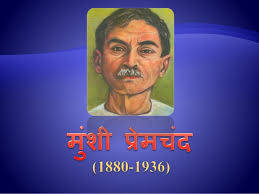SHAYARI
waqt e rukhsat kahi tare kahi jugunu aaye
haar pehnane mujhe phool se baazu aaye
haar pehnane mujhe phool se baazu aaye
bas gayi hai mere ahsaas mein ye kaisi mahak
koi khushboo main lagaaun teri khushboo aaye
koi khushboo main lagaaun teri khushboo aaye
mainne din raat khuda se ye dua maangi thi
koi aahat na ho dar pe mere aur tu aaye
koi aahat na ho dar pe mere aur tu aaye
us ki baaten ke gul o lala pe shabnam barse
sab ko apnaane ka us shokh ko jaadu aaye
sab ko apnaane ka us shokh ko jaadu aaye
in dino aap ka aalam bhi ajab aalam hai
sokh khaya hua
sokh khaya hua
Maikada Raat Gham Ka Ghar Nikla
Dil Hatheli Tale Khandhar Nikla
Dil Hatheli Tale Khandhar Nikla
Main Use Dhoondhta Tha Aankho Mein
Phool Bankar Vo Shakh Per Nikla
Phool Bankar Vo Shakh Per Nikla
Kiske Shaye Mein Sir Chhupaoge
Voh Shazar Dhoop Ka Shazar Nikla
Voh Shazar Dhoop Ka Shazar Nikla
- Bashir Badr
Jahan Ped Par Char Dane Lage
Hazaron Taraf Se Nishane Lage
Hazaron Taraf Se Nishane Lage
Huyi Sham, Yaadon Ke Ik Gaanv Se
Parinde Udasi Ke Aane Lage
Parinde Udasi Ke Aane Lage
Ghadi Do Ghadi Mujhko Palko Pe Rakh
Yahan Aate-Aate Zamane Lage
Yahan Aate-Aate Zamane Lage
- Bashir Badr
Nikki ki ek dua zindagi bana degi..
Khud roa kar dusro ko hasha degi..
Kabhi bhool kar bi na rulana nikki ko..
Uski ek bad dua saara harsh ko hila degi..
Khud roa kar dusro ko hasha degi..
Kabhi bhool kar bi na rulana nikki ko..
Uski ek bad dua saara harsh ko hila degi..
By Nikki
Kisi Shayar Ne Kaha Zindagi Ek Lamba Safar Hai,
Kisi Aashiq Ne Kaha Zindagi Ek Mushkil Paheli Hai,
Arre Dosto Zindagi Ka Arth Toh Sirf Voh Bata Sakta Hai,
Jiski Shaadi Ke Baad Bhi Koi Saheli Hai!!!
Kisi Aashiq Ne Kaha Zindagi Ek Mushkil Paheli Hai,
Arre Dosto Zindagi Ka Arth Toh Sirf Voh Bata Sakta Hai,
Jiski Shaadi Ke Baad Bhi Koi Saheli Hai!!!
By Prabhpal Pannu
Chand ne ki hogi suraj se mohhabat
Isliye to chand main dag hai
Mumkin hai chand se hui hogi bewafai
Isliye to suraj main aag hai
Isliye to chand main dag hai
Mumkin hai chand se hui hogi bewafai
Isliye to suraj main aag hai
Submitted by Amit Kumar
Uss ko Chaha toa iqrar karna na aya.
Kat gaye umer pyar karna na aya.
Manga uss ne kuch to mangi judai.
Aur ek hum thy k hume inkar karna na aya ..
Kat gaye umer pyar karna na aya.
Manga uss ne kuch to mangi judai.
Aur ek hum thy k hume inkar karna na aya ..
By Farhan Ahmad
Teri wafao mai sanam
Na watan ke rahe na saffer ke rahe
Bikhri lash ke itne tukde hue
Na kafan ke rahe na dafan ke rahe.
Na watan ke rahe na saffer ke rahe
Bikhri lash ke itne tukde hue
Na kafan ke rahe na dafan ke rahe.
By Rakesh sahu
Arz-o-sama kahan teri usat ko pa sake,
Ek mera hi dil hai jahan tu sama sake,
Wahdat ka teri kya hurf-e-dui la sake,
Aina kya majaal jo tujhe mooh dikha sake.
Ek mera hi dil hai jahan tu sama sake,
Wahdat ka teri kya hurf-e-dui la sake,
Aina kya majaal jo tujhe mooh dikha sake.
By Zakir
Kufr bakte hain woh jo kehte hai,
Izhaar-E-Mohabbat ko do labj hi kaafi hai,
Kisi Kafir se suna tha shayad,
Nazre bhi kaha karti hain!
Izhaar-E-Mohabbat ko do labj hi kaafi hai,
Kisi Kafir se suna tha shayad,
Nazre bhi kaha karti hain!
By Abhishek Bundela
Tumhare pyaar mai hamne bahut chote khaye,
Jiska hisaab na hosake utne dard paye,
Phir bhi tere pyaar ki kasam khake kehta hu,
Hamare lab pe tumhare liye sirf pyaar aaye.
Jiska hisaab na hosake utne dard paye,
Phir bhi tere pyaar ki kasam khake kehta hu,
Hamare lab pe tumhare liye sirf pyaar aaye.
By Vijay
Kaaash ke tere chehre par chechak ke daag hote……
Kaaash ke tere chehre par chechak ke daag hote…..
Kaaash ke tere chehre par chechak ke daag hote…..
Chand to tu hai hi ..sitaare bhee saath hote !!!
Kaaash ke tere chehre par chechak ke daag hote…..
Kaaash ke tere chehre par chechak ke daag hote…..
Chand to tu hai hi ..sitaare bhee saath hote !!!
By Chand
Khushi itni ho ki tum dikha sako,
Gum bas itna ho ki tum chupa sako,
Zindagi main kam se kam ek rishta toa aaisa jaroor rakhna,
Jiske liye tum mood off main bhi muskura sako
Gum bas itna ho ki tum chupa sako,
Zindagi main kam se kam ek rishta toa aaisa jaroor rakhna,
Jiske liye tum mood off main bhi muskura sako
From: Khan














